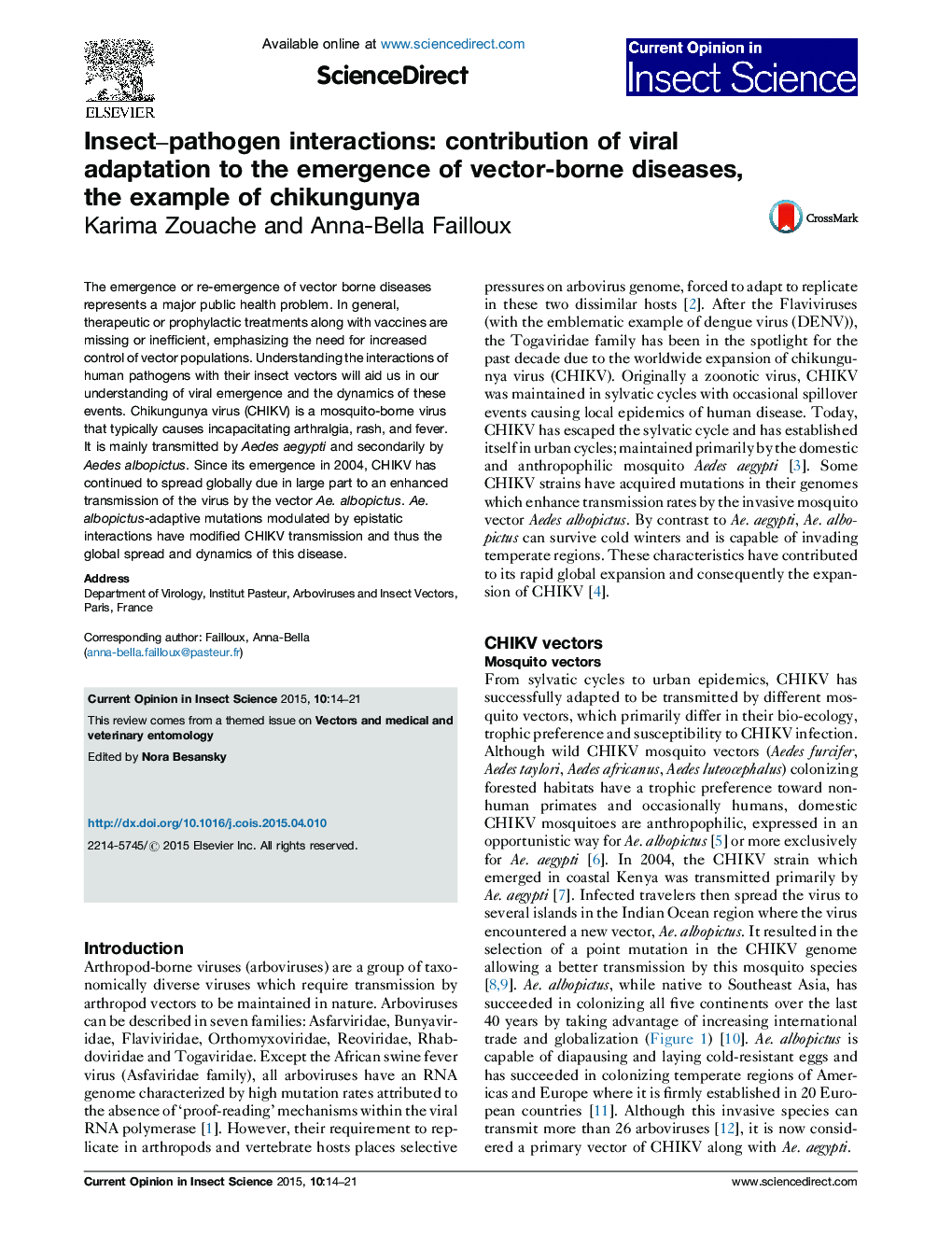| Article ID | Journal | Published Year | Pages | File Type |
|---|---|---|---|---|
| 6374085 | Current Opinion in Insect Science | 2015 | 8 Pages |
Abstract
The emergence or re-emergence of vector borne diseases represents a major public health problem. In general, therapeutic or prophylactic treatments along with vaccines are missing or inefficient, emphasizing the need for increased control of vector populations. Understanding the interactions of human pathogens with their insect vectors will aid us in our understanding of viral emergence and the dynamics of these events. Chikungunya virus (CHIKV) is a mosquito-borne virus that typically causes incapacitating arthralgia, rash, and fever. It is mainly transmitted by Aedes aegypti and secondarily by Aedes albopictus. Since its emergence in 2004, CHIKV has continued to spread globally due in large part to an enhanced transmission of the virus by the vector Ae. albopictus. Ae. albopictus-adaptive mutations modulated by epistatic interactions have modified CHIKV transmission and thus the global spread and dynamics of this disease.
Related Topics
Life Sciences
Agricultural and Biological Sciences
Agronomy and Crop Science
Authors
Karima Zouache, Anna-Bella Failloux,
